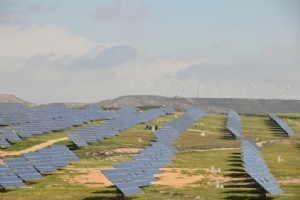Eight of the world's 10 most polluting countries are expected to double their collective renewable energy capacity in the next 15 years, a new study from the World Resources Institute (WRI) has found.
WRI’s analysis, Assessing the Post-2020 Clean Energy Landscape, looks at plans from eight of the 10 largest greenhouse gas emitters — Brazil, China, the EU, India, Indonesia, Japan, Mexico and the US — concluding that their cumulative clean energy supply will jump from approximately 9,000 TWh in 2012 to 20,000 TWh in 2030.
This increase is equivalent to all of India’s current energy demand, with the uptick driven by a flurry of new national energy targets announced over the past year.
Brazil will achieve 45% of renewables in its energy mix by 2030. China will increase the share of non-fossil fuel in primary energy consumption to around 20% by 2030. EU will achieve at least a 27% share of renewable energy consumption by 2030. India will achieve about 40% cumulative electric power installed capacity from non-fossil fuel energy resources by 2030 (with international assistance).
While Indonesia will achieve at least 23% of its energy supply coming from new and renewable energy by 2025, Japan will increase its share of renewables in total electricity generation to approximately 22 to 24% by 2030. Mexico will increase clean energy sources in the national electricity generation mix to 35% by 2024. US will increase its share of renewables – beyond hydropower – in the electricity generation mix to 20% by 2030.

“These new renewable energy targets send strong signals to energy markets and investment circles,” said the global director of the WRI climate programme Jennifer Morgan. “Combined with the Paris climate agreement, it’s clear that renewable energy is poised to surge forward in the next 15 years bringing clean and affordable power to millions of people worldwide.”
The remaining two emitters among the top ten, Canada and Russia, have not put forward post-2020 renewable energy targets and were not assessed. WRI also analysed the 127 intended nationally determined contributions (INDCs) already submitted to the UN, finding that 80% of them referenced clean energy; 67 mentioned clean energy targets; and 35 put forward clean energy actions. However, despite this progress, current global efforts to cut greenhouse gas emissions leave about half of the necessary reductions still to be found, according to a new analysis by the UN.
Mai Linh
